How would you make people talk to each other, who are in close proximity?
Project: “Talkattons” (Talk Buttons)
Let’s get the world talking
Project: “Talkattons” (Talk Buttons)
Let’s get the world talking
Abstract
This experiment aimed to facilitate conversations among individuals nearby who typically do not interact due to shyness or introverted tendencies. The identified scope of the project highlighted that strangers often resist engaging with each other in public settings due to fear of embarrassment. The target demographic included individuals aged 18-65 with diverse backgrounds, focusing on those who are introverted, shy, hesitant, socially restrained, or lack confidence in expressing romantic interest or building professional connections. The experiment sought to overcome these barriers and encourage meaningful interactions among participants.
This experiment aimed to facilitate conversations among individuals nearby who typically do not interact due to shyness or introverted tendencies. The identified scope of the project highlighted that strangers often resist engaging with each other in public settings due to fear of embarrassment. The target demographic included individuals aged 18-65 with diverse backgrounds, focusing on those who are introverted, shy, hesitant, socially restrained, or lack confidence in expressing romantic interest or building professional connections. The experiment sought to overcome these barriers and encourage meaningful interactions among participants.
Why people in public settings don't engage in conversations?
"Introverted people find it difficult to reach out to people in a public setting as they can’t gather the courage to speak to them. The reason behind this behaviour is that they fear embarrassment and awkwardness if the other person declines the opportunity to talk. They don’t reach out to others as they are shy and hesitant."
Some people judge others from their appearance and the way they conduct themselves in public settings. That's the deciding factor for them."
"Introverted people find it difficult to reach out to people in a public setting as they can’t gather the courage to speak to them. The reason behind this behaviour is that they fear embarrassment and awkwardness if the other person declines the opportunity to talk. They don’t reach out to others as they are shy and hesitant."
Some people judge others from their appearance and the way they conduct themselves in public settings. That's the deciding factor for them."
Quantitative Findings from Interviews
This study examines the social media and app usage habits of a group of participants, primarily students. The majority of participants use LinkedIn for networking, while Facebook and Instagram are preferred for socializing. All participants have more than 35 apps on their phones, indicating a high level of app usage. Additionally, a portion of the participants use dating sites such as Bumble and Dil Mil, with some still actively using these platforms. These findings offer insights into the digital behaviour and preferences of the study group, highlighting the prevalence of social media and dating apps in their daily lives.
This study examines the social media and app usage habits of a group of participants, primarily students. The majority of participants use LinkedIn for networking, while Facebook and Instagram are preferred for socializing. All participants have more than 35 apps on their phones, indicating a high level of app usage. Additionally, a portion of the participants use dating sites such as Bumble and Dil Mil, with some still actively using these platforms. These findings offer insights into the digital behaviour and preferences of the study group, highlighting the prevalence of social media and dating apps in their daily lives.
Qualitative Findings from Interviews
This study explores the factors influencing individuals' willingness to initiate conversations with strangers. The majority of participants expressed hesitation to start conversations themselves but welcomed interactions if the other person initiated them. Appearance was identified as a significant factor for some when approaching strangers. Participants cited fear of embarrassment and awkwardness as reasons for not initiating conversations, highlighting a preference for purpose-driven interactions, such as seeking help, expressing romantic interest, or networking professionally. Additionally, participants noted the importance of the approaching stranger's vibe or aura, preferring individuals who are attentive and approachable over those who appear preoccupied or disinterested. These findings shed light on the complexities of social interactions with strangers and provide insights into strategies for fostering meaningful connections in public settings.
This study explores the factors influencing individuals' willingness to initiate conversations with strangers. The majority of participants expressed hesitation to start conversations themselves but welcomed interactions if the other person initiated them. Appearance was identified as a significant factor for some when approaching strangers. Participants cited fear of embarrassment and awkwardness as reasons for not initiating conversations, highlighting a preference for purpose-driven interactions, such as seeking help, expressing romantic interest, or networking professionally. Additionally, participants noted the importance of the approaching stranger's vibe or aura, preferring individuals who are attentive and approachable over those who appear preoccupied or disinterested. These findings shed light on the complexities of social interactions with strangers and provide insights into strategies for fostering meaningful connections in public settings.
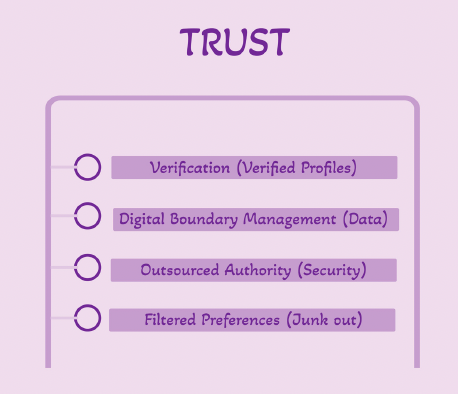
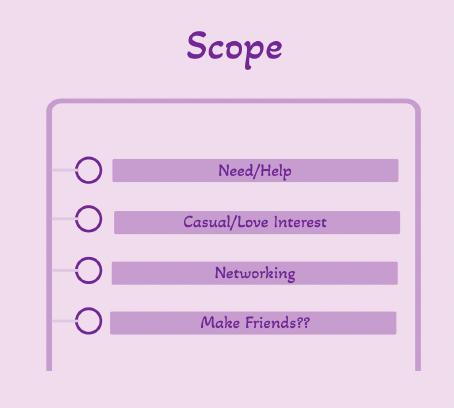
Can symbolic representations help facilitate human interactions?
"Symbolic representations, such as gestures, language, and cultural symbols, play a crucial role in facilitating human interaction. These representations serve as a common ground for communication, enabling individuals to convey complex ideas and emotions. They bridge language barriers and cultural differences, allowing people to connect, empathize, and understand each other's perspectives. Symbolic representations not only facilitate day-to-day interactions but also foster deeper connections and shared meanings, enriching human relationships and societal bonds.
Let's start with something universal- A Smile!
"Symbolic representations, such as gestures, language, and cultural symbols, play a crucial role in facilitating human interaction. These representations serve as a common ground for communication, enabling individuals to convey complex ideas and emotions. They bridge language barriers and cultural differences, allowing people to connect, empathize, and understand each other's perspectives. Symbolic representations not only facilitate day-to-day interactions but also foster deeper connections and shared meanings, enriching human relationships and societal bonds.
Let's start with something universal- A Smile!
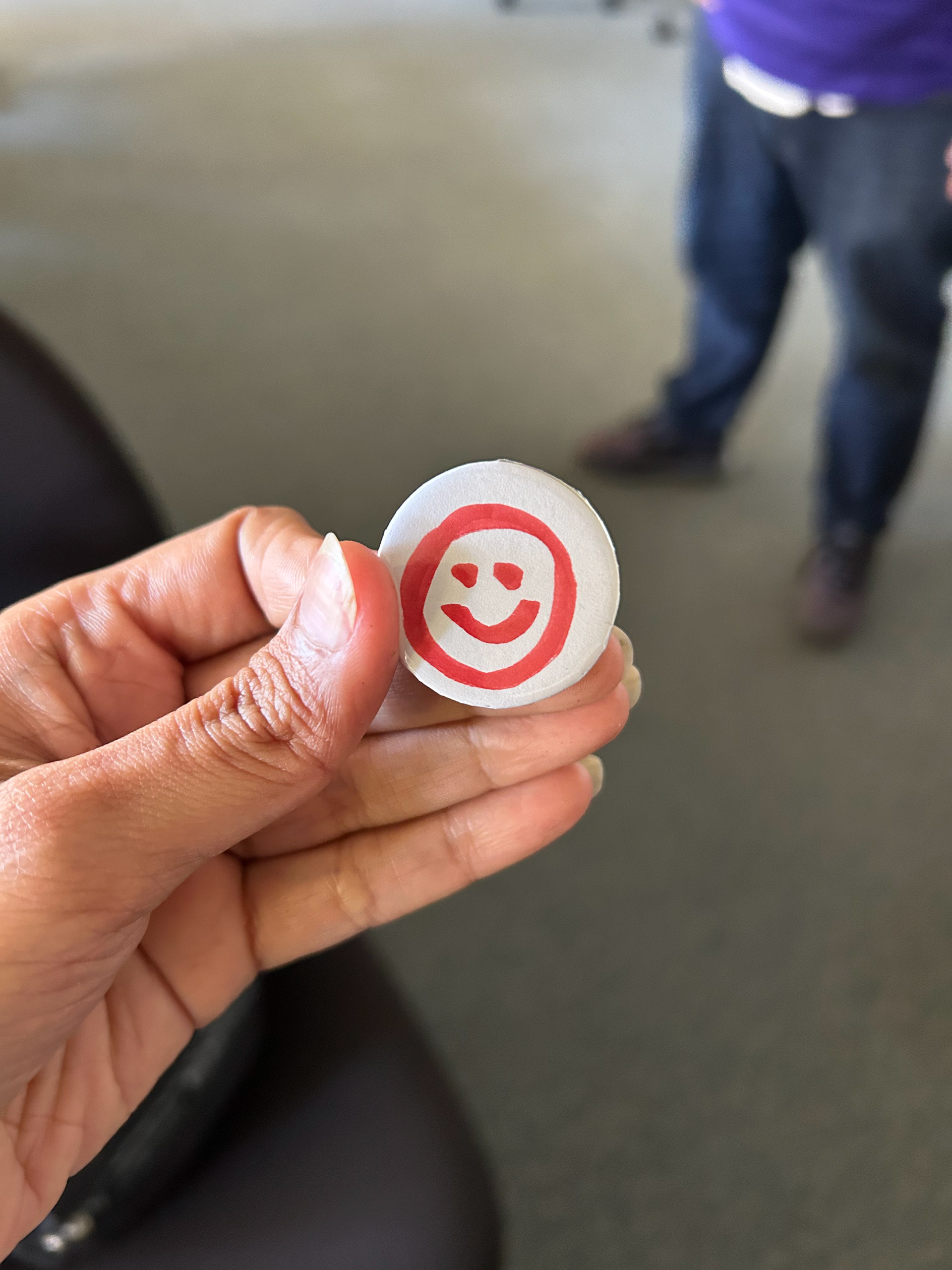

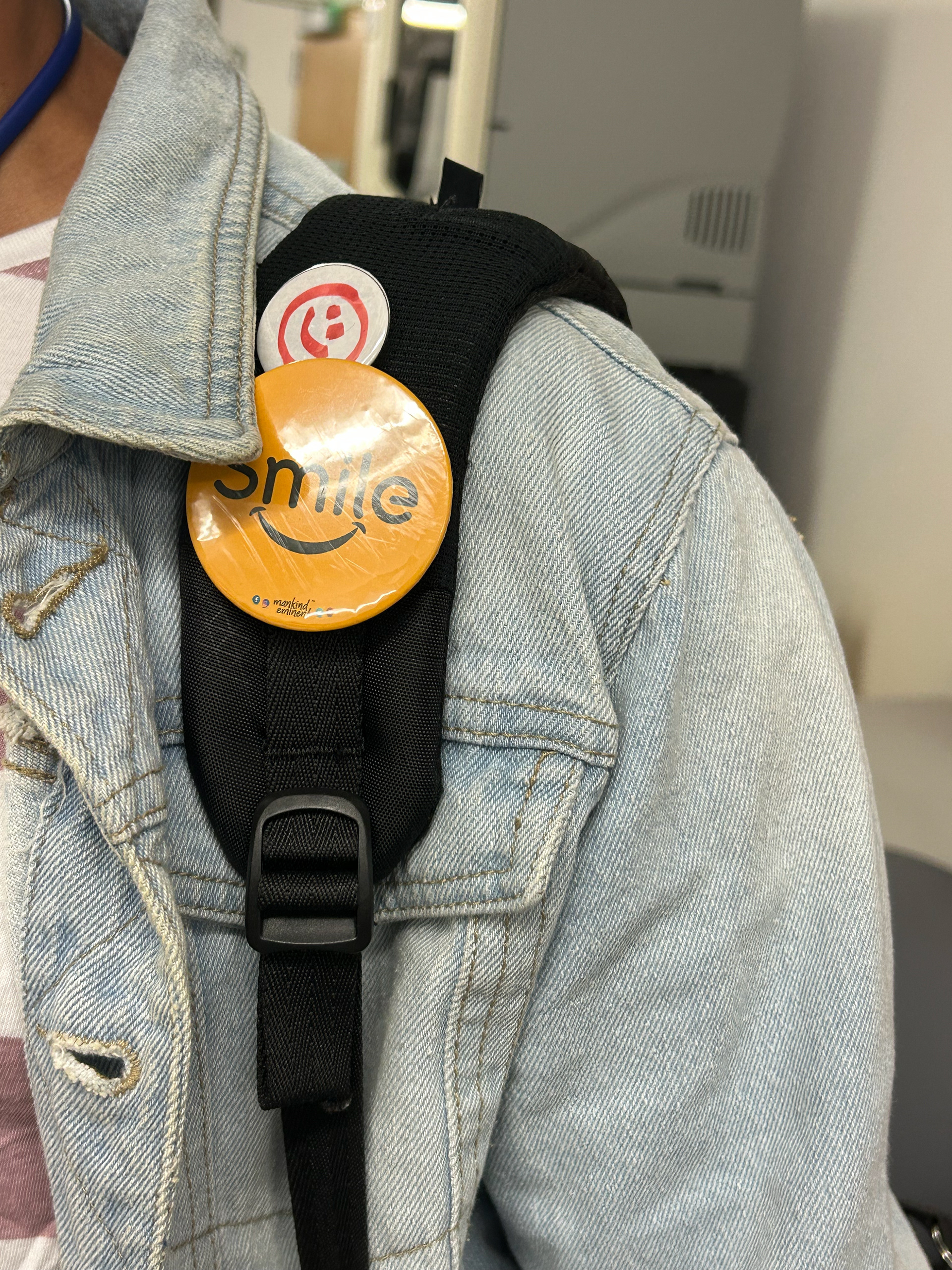
Prototype 1- A simple Smiley Button
This study describes the design and implementation of a prototype "Smile" button intended to encourage interactions among individuals. The button was distributed to friends and popular individuals in a college setting, to spark interactions when wearers noticed each other. However, the small size and design of the button led to limited visibility and it was often mistaken for a common accessory. Despite some wearers noticing the button, many did not interpret it as an invitation for conversation. The findings highlight the importance of clear communication in design and suggest that subtle cues may not effectively convey intended messages for social interaction.
This study describes the design and implementation of a prototype "Smile" button intended to encourage interactions among individuals. The button was distributed to friends and popular individuals in a college setting, to spark interactions when wearers noticed each other. However, the small size and design of the button led to limited visibility and it was often mistaken for a common accessory. Despite some wearers noticing the button, many did not interpret it as an invitation for conversation. The findings highlight the importance of clear communication in design and suggest that subtle cues may not effectively convey intended messages for social interaction.
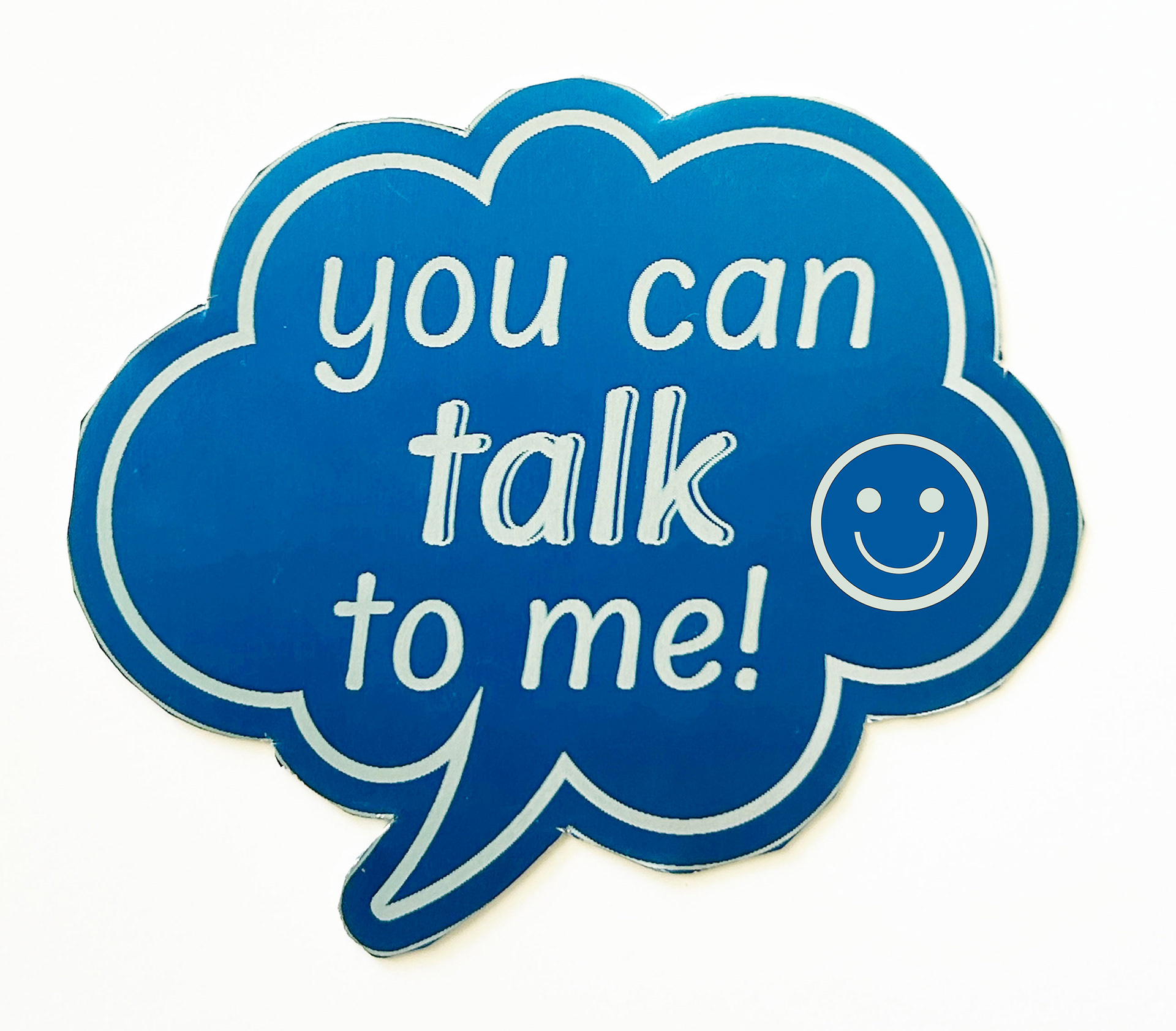
Prototype 2- You Can Talk to Me (conversation button)
This study presents the design and evaluation of a second prototype button with the message "You can Talk to Me," intended to facilitate interactions among individuals in public settings. The button, larger and more distinct than the previous prototype, aimed to attract attention and convey a clear message. The researcher wore the button for three days in various public settings to gather feedback. Results indicate that the button successfully captured people's attention, sparking curiosity and prompting conversations about its meaning. However, wearers noticed that people tended to associate the button with the specific context in which it was worn, such as assuming the wearer was a new trainee at a bookstore or a member of a Catholic club on public transportation. The findings suggest that clear communication and context are essential in designing effective social interaction cues.
This study presents the design and evaluation of a second prototype button with the message "You can Talk to Me," intended to facilitate interactions among individuals in public settings. The button, larger and more distinct than the previous prototype, aimed to attract attention and convey a clear message. The researcher wore the button for three days in various public settings to gather feedback. Results indicate that the button successfully captured people's attention, sparking curiosity and prompting conversations about its meaning. However, wearers noticed that people tended to associate the button with the specific context in which it was worn, such as assuming the wearer was a new trainee at a bookstore or a member of a Catholic club on public transportation. The findings suggest that clear communication and context are essential in designing effective social interaction cues.
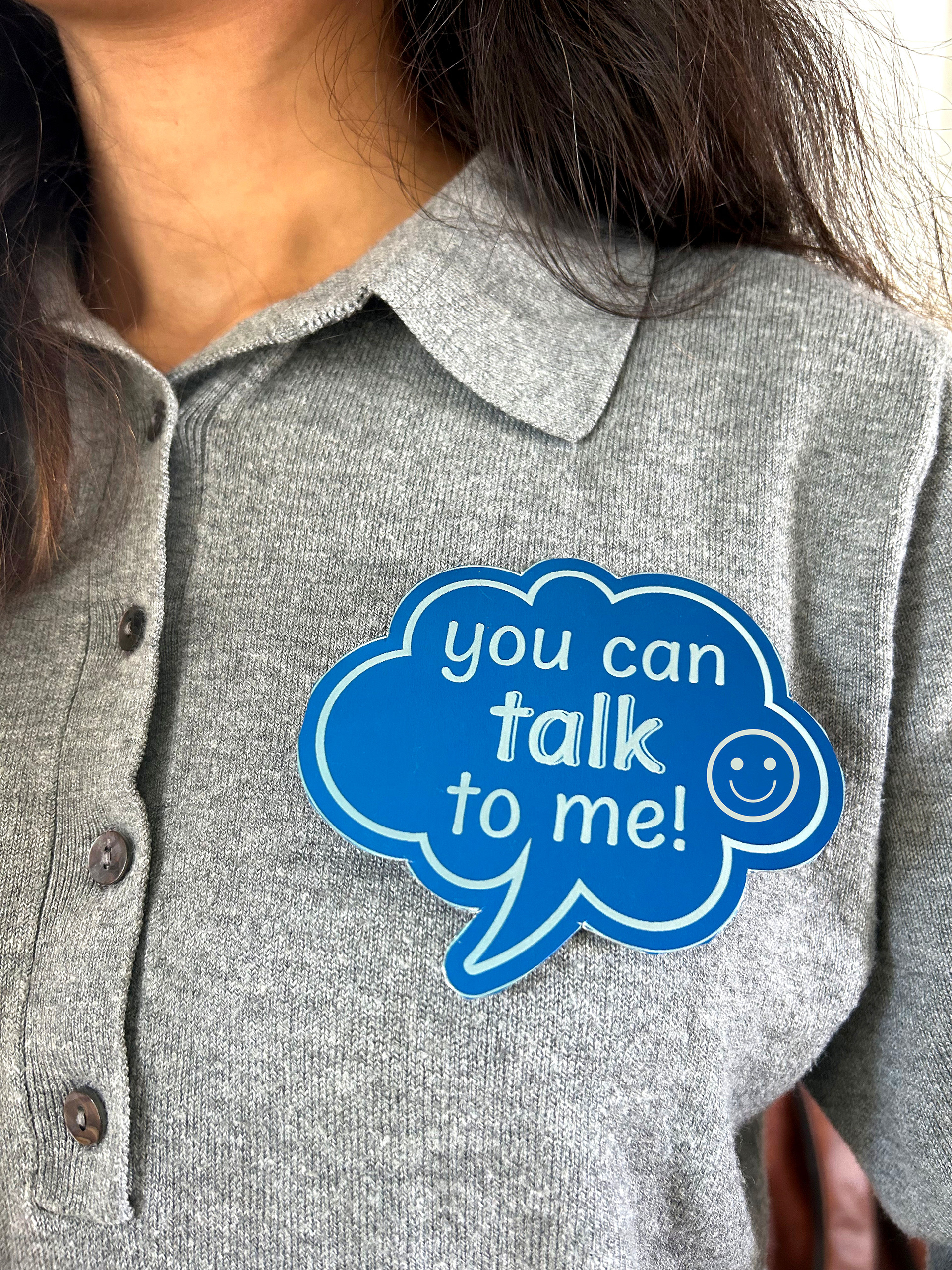
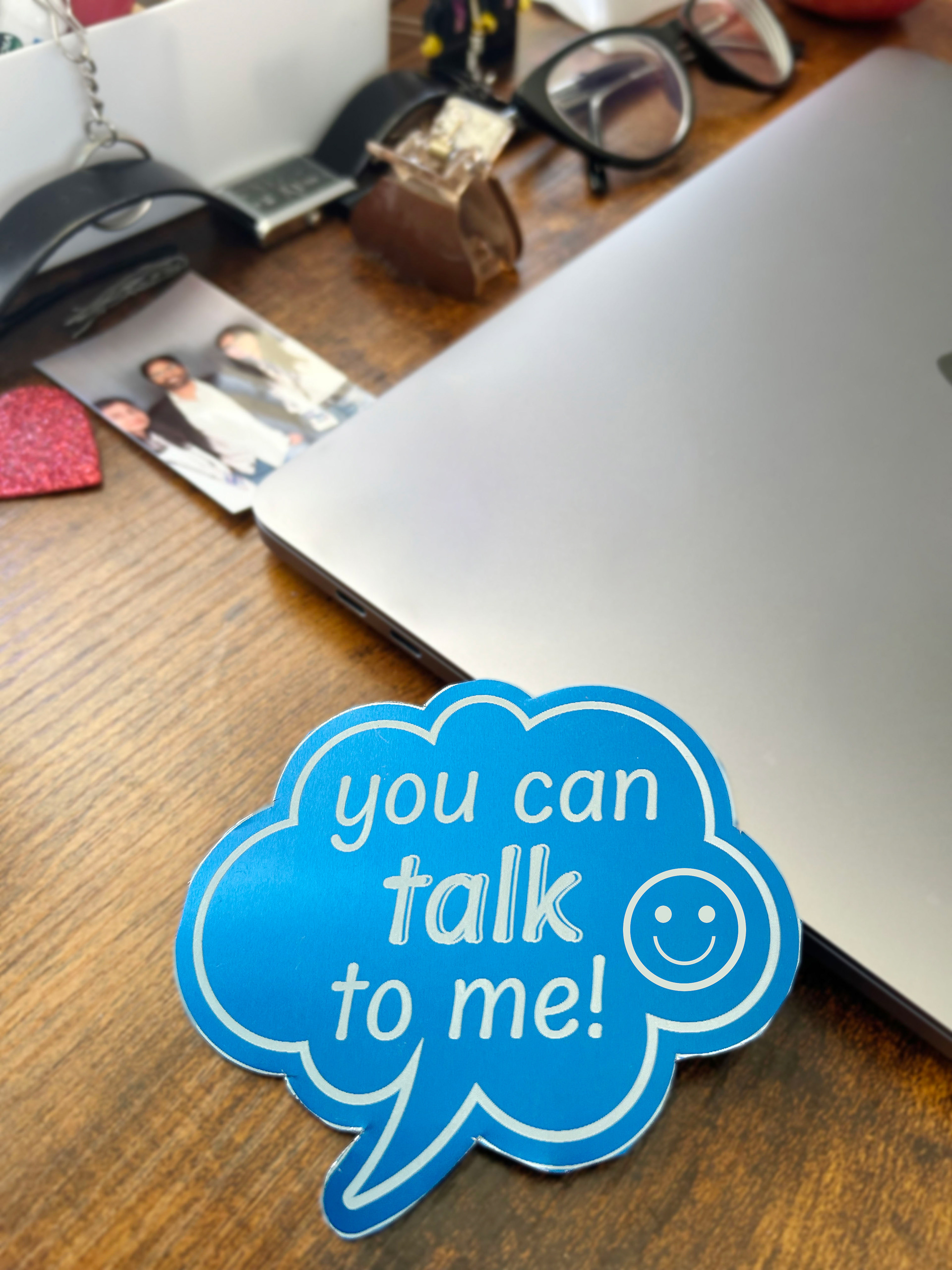
Prototype 2- You Can Talk to Me (conversation button) can be linked with an app which can further increase engagement. Below are a few scenarios in which the features of the app can be used.
Discussion
This study presents the findings from two experiments involving small smile buttons and a larger text button ("You can talk to me") to facilitate interactions among individuals. The research highlights the importance of visual appeal and clear messaging in the design of social interaction cues. The experiments faced challenges such as limited time and resources, leading to staged scenarios to observe participant reactions. Despite efforts to prompt interactions, participants often ignored the buttons, perceiving them as mere accessories. Feedback emphasized the need for larger, more visually appealing buttons with clear, direct messages to effectively communicate their purpose. These findings underscore the importance of thoughtful design in creating effective social interaction cues.
This study presents the findings from two experiments involving small smile buttons and a larger text button ("You can talk to me") to facilitate interactions among individuals. The research highlights the importance of visual appeal and clear messaging in the design of social interaction cues. The experiments faced challenges such as limited time and resources, leading to staged scenarios to observe participant reactions. Despite efforts to prompt interactions, participants often ignored the buttons, perceiving them as mere accessories. Feedback emphasized the need for larger, more visually appealing buttons with clear, direct messages to effectively communicate their purpose. These findings underscore the importance of thoughtful design in creating effective social interaction cues.
Future Work
The project findings indicate that the developed prototype has significant potential for further refinement to enhance interactions among people. Feedback from my peers revealed differing opinions on how to improve the prototype. Some suggested integrating intelligence into the button itself to aid communication, while others advocated for retaining an associated app. Those in favour of the app argued that it could provide a buffer against public rejection, a concern for many users. They also emphasized the importance of providing users with a clear purpose for engaging with the prototype, such as expressing romantic interest or building a network with like-minded individuals. This feedback suggests that future iterations of the prototype should focus on enhancing user engagement and providing clear benefits to users.
The project findings indicate that the developed prototype has significant potential for further refinement to enhance interactions among people. Feedback from my peers revealed differing opinions on how to improve the prototype. Some suggested integrating intelligence into the button itself to aid communication, while others advocated for retaining an associated app. Those in favour of the app argued that it could provide a buffer against public rejection, a concern for many users. They also emphasized the importance of providing users with a clear purpose for engaging with the prototype, such as expressing romantic interest or building a network with like-minded individuals. This feedback suggests that future iterations of the prototype should focus on enhancing user engagement and providing clear benefits to users.
Conclusion
In conclusion, this experiment has provided valuable insights into user interaction, trust-building in development, and the cues users provide to designers. It has highlighted common mistakes designers make, such as neglecting important design elements like size, placement, colour, and messaging, which can lead to the failure of a product or service. Understanding user needs and wants is crucial, as is interpreting the messages and cues they provide to guide design solutions.
In conclusion, this experiment has provided valuable insights into user interaction, trust-building in development, and the cues users provide to designers. It has highlighted common mistakes designers make, such as neglecting important design elements like size, placement, colour, and messaging, which can lead to the failure of a product or service. Understanding user needs and wants is crucial, as is interpreting the messages and cues they provide to guide design solutions.
Furthermore, the concept of building trust emerged as a key learning point. The importance of authenticity and verification in engaging with users was underscored, along with the need for a credible and neutral authority to resolve trust issues. Establishing digital boundaries and offering filtered preferences were also identified as important factors in building trust with users.
Overall, this experiment has deepened my understanding of user behaviour and the complexities of trust-building in design. It has highlighted the importance of listening to users, interpreting their cues, and building authentic relationships to create successful products and services.